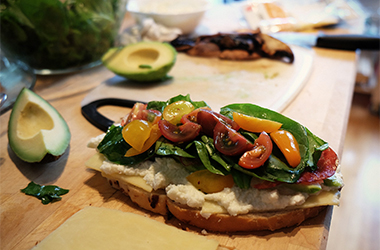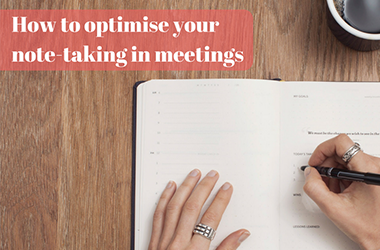
You’re in charge of organising a business seminar, but you have no idea what kind of catering to provide. To help you decide, you need to take several different factors into account, starting with the number and profile of your participants, the place where the business event is taking place, as well as the atmosphere you wish to create.
If your seminar is for your clients, you should opt for a buffet or a sit-down meal. But if it’s more of a team-building or motivation day for your employees, you could go for a cocktail lunch.
Stand-up or sit-down? Choosing the meal type
Before deciding what form your food should come in, ask yourself what the objective of the seminar is. Is it for training purposes? For management? Team-building? By answering this initial question, you will be able to define the aim of your seminar, the number of participants and the venue. This way, you can also decide if your attendees will be standing up or sitting down for food.
The stand-up format brings a more informal feel to your seminar. It’s better suited for when the guests know each other (for example, company employees) and generally speaking, it’s recommended for events with more than 50 people attending. A sit-down lunch or dinner, meanwhile, is recommended for seminars with fewer than 50 people. The atmosphere is more formal and the meal is more substantial, so it’s the perfect option if your seminar is geared towards your partners or clients.
The cocktail party option
In principle, a cocktail event would be held either mid-morning or late afternoon. Its organisation should be simple and clear-cut. For this type of event, there are no tables or chairs, although you may wish to provide bar tables so that guests can put down their glass and napkin.
The food is arranged on one large table and the guests serve themselves. The plates are generally made of plastic or cardboard, and the cutlery is limited to spoons and cocktail forks, as the food is served in bite-sized portions, making it easy to eat.
The different types of cocktail event:
- Aperitif cocktails: this generally involves hot and cold food, sweet and savoury nibbles, or even appetisers served before a sit-down lunch or dinner.
- Cocktail lunch: this will involve more elaborate and gourmet-style food, served for lunch from midday.
- Cocktail dinner: this replaces dinner and is served from 6pm.
This type of catering has several advantages:
- It’s economical, as it requires fewer staff, lighter logistics and less washing-up
- It does not require as much space
- It saves time
- The atmosphere is less formal, so it’s ideal for meeting new people or building relationships
- Easier communication, as the guests move more freely around the room and can talk with as many people as they wish.
The buffet option
A buffet differs from a cocktail event in that the guests are generally seated, and the food is more substantial. Buffets are often served for lunch or dinner. For this type of catering, you need to have enough space for tables and chairs, as well as for the buffet table itself. Guests can serve themselves, but you could also hire a head waiter to give a more formal feel to your seminar.
With this option, the menu is much more extensive and may include starters, along with a wide variety of salads, a generous meat or seafood-based main course, and a dessert, possibly with a charcuterie platter or cheese board on the side. A buffet is generally either hot or cold (the cold option is often cheaper), but you could provide a mix of cold and hot dishes to offer more variety. And just as with the cocktail option, the dishes and cutlery are often disposable – but if your budget allows for it, there’s nothing to stop you from spending a little more on good porcelain tableware and stainless steel or silver cutlery.
The advantages of this catering option are:
- It’s cheaper, requiring fewer catering staff
- More comfortable, as the guests are sat down
- The buffet is a great substitute for a proper meal
- Informal atmosphere and easier communication: the guests get to meet when they’re serving themselves at the buffet table. What’ more, there is often no designated seating, which means that guests can switch seats during the meal to talk with other people.
But the buffet also has its disadvantages – especially the fact that you have to queue. To alleviate this, talk to your caterer; they should be able to suggest the best layout for the room and the number of guests.
The sit-down meal option
Also known as the three course meal option, this type of catering is more formal. The guests remain seated and are served by waiting staff. Here, the menu is provided in advance. It’s easier to organise and you are more likely to be able to stick to your schedule.
But on the downside, the guests cannot have second helpings, and the wait between each course may be longer.
Don’t forget to plan breaks during your seminar!
If your seminar is taking place over a full day, don’t forget to allow for breaks in the middle of the morning and afternoon so that the participants can recharge their batteries. These breaks should include hot drinks (tea, coffee) and fruit juice, along with a sweet snack such as fresh fruit, biscuits, cake or pastries.
Finally, if your seminar is lasting more than one day, consider offering breakfast, preferably in a buffet format to save time.
Visit our website to find your perfect seminar room! Our rooms come with an optional catering service, to help your event run more smoothly.






 English
English  Français
Français  Nederlands
Nederlands
I added a new list today. I changed how I scrape to get more results. Read my post for more details.